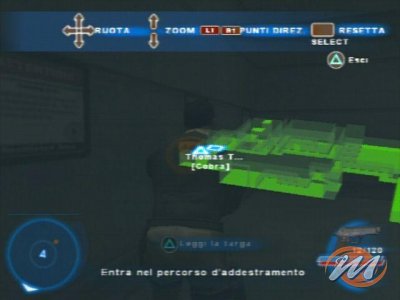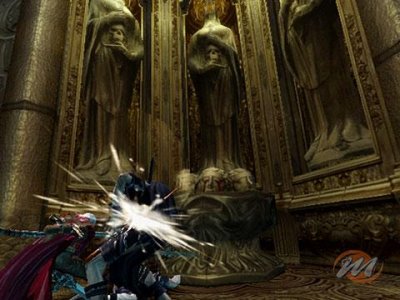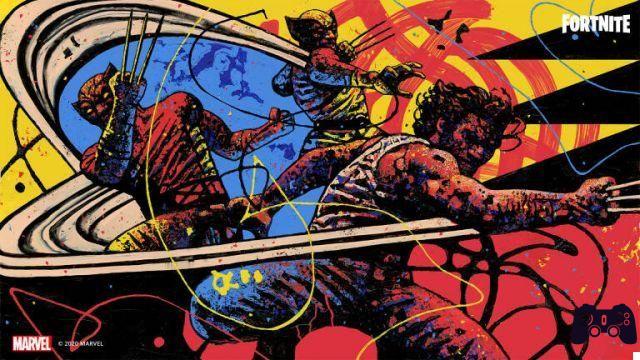Welcome back to the eighth installment of our in-depth guide to Super Smash Bros. Ultimate's stellar cast of playable characters
In this ours guide, we will devote ourselves to the many characters playable of Super Smash Bros. Ultimate, starting with Mario up to the latest additions of the second Fighters Pass. In each episode we will describe about five or six fighters, however, dividing them according to the chapter of Smash in which they made their debut. Today we will conclude the parenthesis on Brawl rookies in the opposite way in which we closed the Melee chapter: we will deal with six characters. Today we will see King Dedede, Olimar/Alph, Lucario, ROB, Cardboard Link e Wolf. In the appendix, we will better explain the concept of semi-clones.
Quick Preamble
Before moving on to the characters, let's clarify the fulcrum of the guide: in Super Smash Bros. Ultimate the task of each player is to throw opponents off the screen, fighting in arenas that mix the genre of fighting with elements of platformer (X and Y allow you to jump). The A and B keys, used in combination with the various directions, give life to the most disparate moves, as well as the back keys to manage shields, dodges and holds. The game also implements tools that irremediably alter the fate of each encounter, but in this guide we will basically focus only and only on the characters themselves. Increasing the opponent's damage will make him lighter and, therefore, vulnerable.
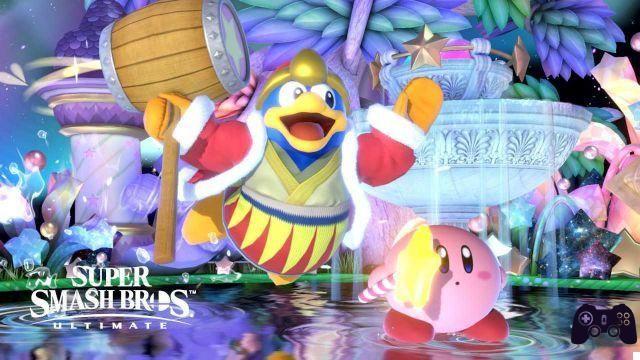
King Dedede - Super Smash Bros. Ultimate Character Guide
With the arrival of King Dedede, Super Smash Bros. Brawl has sanctioned the end (or at least for now: the second Fighters Pass is not yet concluded) of the rookies from the Kirby saga. Similarly to Meta Knight, Dedede was never really a real "bad guy"; it is mostly a victim of circumstances. In Smash, however, Dedede's role is this. Much of what Kirby can do - copying skills excluded - the burly monarch knows do it better.
- Franchise of origin: Kirby
- Origins: King Dedede was born as the final boss of the first Kirby's Dream Land for Game Boy, also anticipating Meta Knight. Thereafter, every antagonistic role ever played by the self-proclaimed (and, therefore, purely nominal authority) king of Dream Land is almost primarily caused by his possession perpetrated by malevolent external forces.
- Gameplay: Il Sucking King Dedede's (B) differs from Kirby's in the lack of copying skills (as in the Kirby games themselves, on the other hand), but boasts a greater range and allows bullets to be returned to the sender (Fox, Falco). Also, engulfing an enemy makes Dedede harder to knock out. Bombospino launch (↔ + B) hits the opponent with the invincible enemy of the Kirby saga of the same name, inflicting massive damage with considerable throwing power. Super salto Dedede (↑ + B) replicates King Dedede's eponymous jump seen in the Kirby series, with a notable vertical momentum and a devastating swoop. The latter can be canceled by performing a feint in flight (↑). The Martello Jet (↓ + B) consists of an enhanced version of Kirby's Side Special Attack.
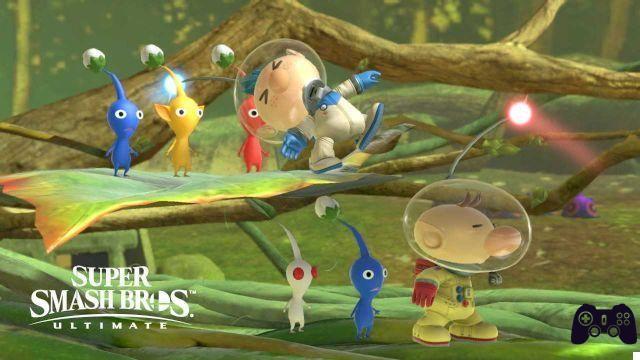
Olimar / Alph - Super Smash Bros. Ultimate Character Guide
With the arrival of Olimar and Alph as an alternate costume, the series also comes in our Super Smash Bros. Ultimate character guide Pikmin. Faithfully to the original games, Olimar and Alph translate the gameplay of the Pikmin trilogy with a technical and highly stealthy fighting style that rewards the player's agility. Don't be fooled by the tender and cuddly appearance of the characters: they are not at all suitable for beginners. You can change Costumes in the character selection screen by pressing the triggers (Shield) or clicking on the character portrait after choosing it.
- Franchise of origin: Pikmin
- Origins: In his job as a delivery boy for the delivery company P̶l̶a̶n̶e̶t̶ ̶E̶x̶p̶r̶e̶s̶s̶ Hocotate Freight, Olimar found himself trapped on the Remote Planet (one of the scenarios, image above) and had to rebuild his spaceship with the help of native creatures. The latter, the Pikmin, also return in Smash to give him a hand, although without them the character is substantially revealed. useless. Normally Olimar would be the size of a coin, but he and the Pikmin got a little bigger to compete with the rest of the roster. Alph, a novice from the planet Koppai, is instead the protagonist of Pikmin 3 for Wii U and Nintendo Switch.
- Gameplay: Based on the colore, Pikmin can have various effects once launched. Those red they are immune to fire and burn, those blu they do more damage and don't drown, those Detective stories they are launched with an arc trajectory and resist / do electrical damage, those Bianchi they poison enemies on contact and finally those violet they are the heaviest (and most harmful). Pikmin collection (B) allows you to extract up to three (six in Brawl) from the ground. Pikmin are always drawn in the same order. Pikmin launch (↔ + B) allows you to throw them at the opponent with the effects described above. THE Pikmin alati (↑ + B) allow Olimar or Alph a small flight, with a range inversely proportional to the number of Pikmin extracted. In the end, Rainbow Pikmin (↓ + B) allows you to quickly recall them to the player in the correct order. Without Pikmin, Olimar and Alph can only resort to weak physical attacks (A).
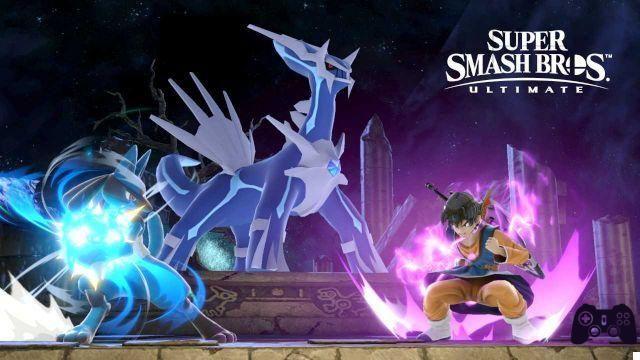
Lucario - Super Smash Bros. Ultimate Character Guide
We talked about replacements with Ike, and Lucario did the same thing with Mewtwo. Despite some substantial differences between the two, the Fighting and Steel-type Pokémon has replaced the legendary Genetic Pokémon in the Brawl roster, while the fourth Smash and Ultimate allow the two to coexist. As with Mewtwo, also in this case the telepathic ability to speak comes from the version seen in the eighth feature film Lucario and the mystery of Mew.
- Franchise of origin: Pokémon
- Origins: Lucario is the evolution of Riolu, an exclusively Fighting-type Pokémon obtainable from the egg of Marisio (Fabiolo in the anime) on the Iron Island of Sinnoh. With the mutual promotion between the eighth film and Smash, Lucario quickly became one of the most popular Pokémon. One of the few to benefit from the Mega Evolution mechanics (introduced in Pokémon X and Y), in fact, was him. His Final Smash in Brawl was - keeping the parallels with Dragon Ball - an "energy wave" not existing in the Pokémon games, Aura ray. The fourth Smash replaced it with Mega Evolution, while Ultimate combines both.
- Gameplay: Lucario enjoys a mechanic that is exclusive to him, Aura. The higher his damage, the harder he hits. Forzasfera (B) is based on the same charge as Mewtwo's Shadow Ball, but the Aura affects the effect. Palmopoe (↔ + B) is a short range attack, which in close combat implements a grapple. Extra-fast (↑ + B) does not deal damage (unlike the Pokémon series) it is directional like other recovery moves, but it requires a lot more attention since based on the damage taken it can become almost uncontrollable. Double team (↓ + B) is a counterattack (again, contrary to the Pokémon series) with the characteristic of being much more difficult to govern if the damage is high.
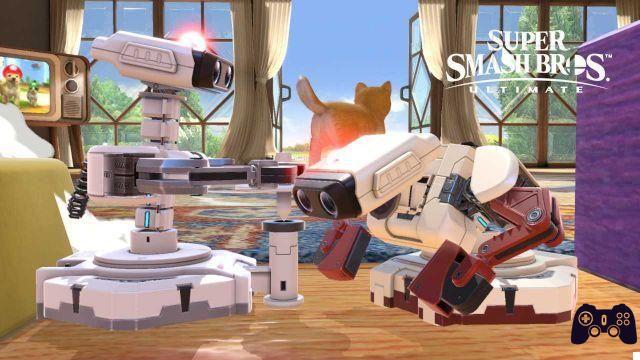
ROB - Super Smash Bros. Ultimate Character Guide
The rule requires that all the characters that we will see in this guide to Super Smash Bros. Ultimate come from a video game. In the case of ROB is… more or less true. In fact, this peripheral for the NES was born promising the appeal of a toy like a "Trojan horse" to sell the console itself. We'll talk more about it below, but ROB's arrival in Super Smash Bros. Brawl has been of no small importance in the ambitious adventure mode. The Subspace Emissary.
- Franchise of origin: Gyromite e Stack-Up
- Origins: It was the 1983 when the gaming industry actually found itself on its knees. Cross-platform games were being developed without an iota of the criteria by which we see various ports on different consoles nowadays. The videogame adaptation of ET - The extraterrestrial for Atari 2600 was such a flop that Atari itself led to burying unsold copies in Alamogordo, New Mexico. It wasn't a fertile market for consoles, so Nintendo came up with a peripheral - an operating robot friend, or "Robotic Operating Buddy”- as a“ toy ”with which to sell the Nintendo Entertainment System in the West. Since then, the success of ROB (or "Robot" in Japan, red-beige suit) has made him and Mario the two faces to whom we indirectly owe the entire gaming industry today… up to PS5 and Xbox Series X. Before Smash , ROB was a playable character in Mario Kart DS.
- Gameplay: ROB encourages an “ignorant” style of play, but he also knows how to be technical. Laser beam (B) it is a projectile capable of hitting multiple targets on the same trajectory, but like Wario's Gust it is inactivity that charges it. Rotation (↔ + B) is a turnaround with which you can riddle your opponent with shots, with not just a throwing power. More tactical players can also use the move for repel bullets. The Robopulsore (↑ + B) does not deal damage, but allows ROB a more than generous flight (the "fuel" in Ultimate appears on the hips of the character). Gyro (↓ + B) allows ROB to load the launch of the spinning top of the same name from Gyromite by holding B. Finally, ROB has excellent air strikes up (↑ + A in the air) and down (↓ + A in the air).
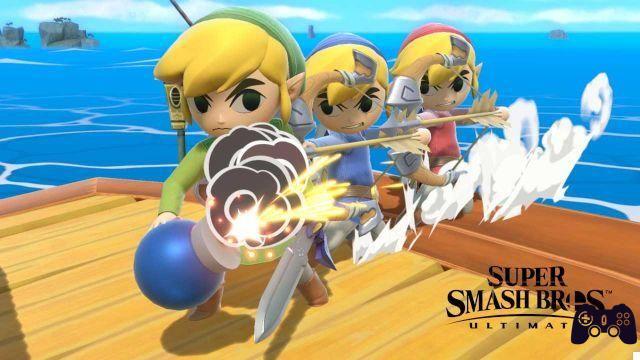
Cardboard Link - Super Smash Bros. Ultimate Character Guide
The last character from The Legend of Zelda that we will show in our guide is Cardboard Link. The hero of The Wind Waker and Phantom Hourglass, grandfather of the protagonist of Spirit Tracks, found himself at the center - at the release of the chapter for Nintendo GameCube - of a sort of controversy within the Zelda fandom. The cel-shaded artistic style, at the time (and, it must be said, still today), made many historians turn up their noses, while Nintendo proudly adopted it in the official illustrations of The Minish Cap, Four Swords, Four Swords Adventures and, most recently, Triforce Heroes.
- Franchise of origin: The Legend of Zelda
- Origins: At the end of Link and Ganon's battle in The Legend of Zelda: Ocarina of Time, the time line of the series split into three. In one of the outcomes, Link succumbs in the final showdown, leading to the time branch that includes A Link Between Worlds. In the other, Link Bambino returns to his own time to live his life. In the third, due to the events of the second, the rescued Hyrule finds herself without a Link to defend her from future threats. The gods solved the problem with a universal flood, which turned the kingdom into a huge ocean. “Link cardboard” comes from this world.
- Gameplay: The moves are, for better or worse, the same as Link's. Hero's Bow (B) fires a standard arrow, which however cannot be picked up (A) later as for Link and does not boast the fiery effect of Link Child's arrows. The Boomerang (↔ + B) is the same seen with the other two versions of the character, and the same goes for theRotating Attack (↑ + B), also usable on the ground here. The Bomb Cardboard Link's (↓ + B) explode without the detonator just like Link Child. Their fuse (and explosion) is based on the same type of fire seen in Link Carton's provenance games (and elsewhere, as in the 1998 film Mulan). All of Cardboard Link's attacks (A) use the sword, while the other Links also implement kicks. There pinch (made with three fingers) (Shield + A) of Link Cardboard can also be done at medium distance.
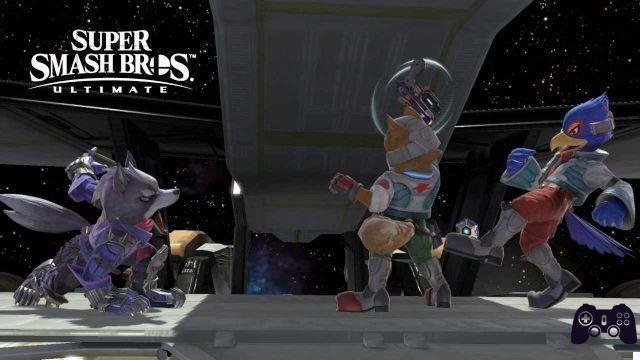
Wolf - Super Smash Bros. Ultimate Character Guide
We close the section of our Super Smash Bros. Ultimate character guide dedicated to Brawl rookies with one of the last big surprises of the chapter for Wii. Wolf is the leader of the rival bounty hunters of the Star Fox team, known by the aptly named Star Wolf. Even in his case - which is why we will also talk about semi-clones shortly - it is a modified version of an already existing character, in this case Fox.
- Franchise of origin: StarFox (in Europe StarWing for copyright reasons; the sequel StarFox 64 was called Lylat Wars)
- Origins: Wolf's actual debut in the StarFox series was slated for the second chapter for Super Nintendo (1996), before the game was retired and then reappeared on SNES Classic Mini (2017) and Nintendo Switch Online (late 2019). Until then, the first appearance of Wolf O’Donnell was in StarFox 64 / Lylat Wars (1997) as a rival to Fox. As already mentioned, Wolf also boasts its own team, which also includes the Pigma pig who (mortally) betrayed Fox's father, James. The Star Wolf team usually works on behalf of Andross, but from time to time also collaborates with rivals when and if the situation calls for it. Prior to Brawl, Wolf made a (lightning-fast) appearance in Melee's intro cinematic.
- Gameplay: Wolf translates into Smash as a counterpart slower and heavier by Fox. His Blaster (B) hits with a slower and shorter range, but deals more damage and - thanks to the curved hook on the barrel - also acts as a physical attack. The Flash in Wolf (↔ + B) consists of a diagonal forward aerial sprint, which unlike the Fox Illusion and Hawk Phantom does not stop at the edge of the arena when used on the ground. On the other hand, the final blow of the move acts as a Meteor Smash. Wolf fire (↑ + B) boasts a shorter range than the two counterparts of Fox and Falco's move, but loads even faster. Wolf's variant of the Reflector (↓ + B) allows the fastest to use it as a manual counterattack, given the invincibility of Wolf at the beginning of the move, but otherwise it is identical to that of Fox.
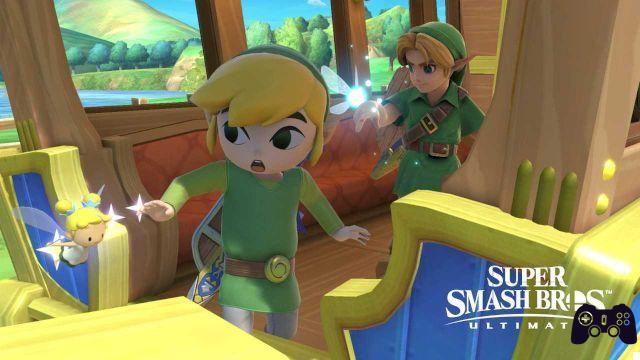
Concluding details, eighth episode: the semi-clones
In every fighting game there are clones, that is characters almost identical to others in the moves and movements, and the cast that we will see in the guide to Super Smash Bros. Ultimate is no exception. The similarities between some characters and others are often more than just similarities, as you will have seen in the gameplay entries over the course of these first eight episodes. Let's clarify one thing right away: these are not costumes like Olimar and Alph, because each set of moves inevitably shows variations between one character and another. In the case of semi-clones such as Baby Link and Cardboard Link (above), it is never a matter of preference.
In the case of real clones, officially called by the game Eco characters, the story is different and we will have the opportunity to talk about it in more detail in the next appointments. The advice we give you is to alternate the semi-clones with each other and see for yourself what are the differences that distinguish them. A little for the number of characters and a little for the number of episodes, we arrived at turning point: next time we will talk about the characters of Super Smash Bros. for Nintendo 3DS and Wii U, or more simply “the fourth Smash”, spending a few words on fighters with special indicators for damage.
That's all for today: how are you finding yourselves so far? (You can find the summary here.) Please let us know by leaving us a comment below, and don't forget to stay on Holygamerz to not miss any news from the videogame world and beyond.




